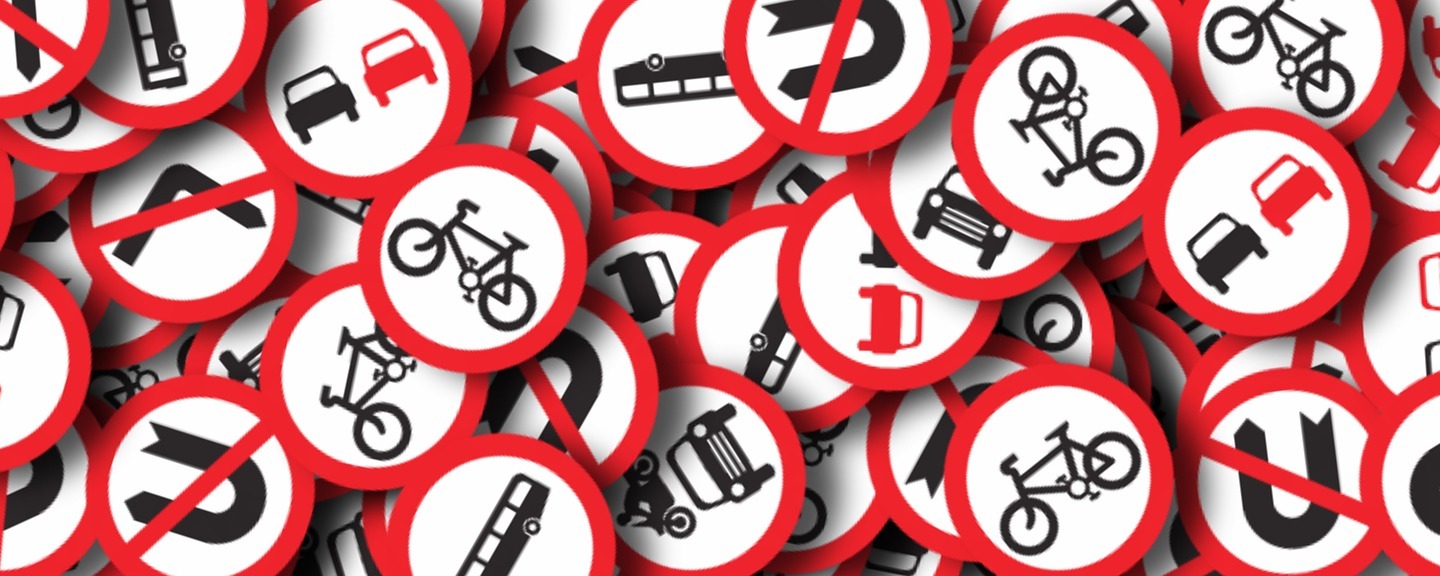Road Signs and Traffic Signs - UK Theory Test
Posted on 21st February 2024 at 12:45
Understanding the different types of road signs & traffic signs and their meanings is crucial for passing the UK Theory Test and for safe driving. This article provides a detailed look at these signs, focusing on their purpose, shapes, colours, and what they indicate on the roads.
Road Signs and Traffic Signs – UK Theory Test:
The Purpose of Road Signs and Traffic Signs:
Road signs serve to regulate traffic, guide drivers, and ensure road safety by providing essential information and warnings about road conditions.
What are the 3 Types of Road Signs?:
Warning Signs:
Warning signs in the UK are designed to alert drivers about potential hazards or changes in road conditions ahead. These signs are typically triangular with a red border, symbolising caution.
They cover a wide range of warnings including upcoming junctions, roadworks, sharp bends, changes in road layout, pedestrian crossings, animals crossing, and schools.
Recognising and understanding these signs is vital for adjusting driving behaviour to maintain safety. They pre-emptively inform drivers to slow down, be more alert, or prepare for sudden changes in the road, helping to prevent accidents and ensure smooth traffic flow.

Order Signs:
Order signs provide instructions that must be followed. They come in various shapes:
Circular signs, typically with a red border for prohibitions, and blue for mandatory actions.
Octagonal for stop signs, commanding drivers to make a complete stop.
Inverted triangle for "give way" signs, indicating drivers must give way to others.
Informational and Directional Signs
Informational signs offer guidance and data about road use. They are often rectangular:
Blue rectangles provide information on motorways.
Green rectangles guide on primary routes.
White rectangles offer directions on local routes.
Brown rectangles indicate tourist or cultural information.
What Do the Different Coloured Road Signs Mean?
Colours play a vital role in categorizing signs by their function—warnings, mandatory actions, directions, and informational messages, each associated with specific colours for quick recognition.
Red: Signals prohibitions or warnings.
Blue: Indicates mandatory instructions or provides information.
Green: Used for directions on primary routes.
Yellow: Highlights warnings, often temporary, such as roadworks.
White: Offers general information and directions on local routes.
Specific Road Signs and Their Interpretations:
Road Signs Giving Warning:
The optimal rev range for changing gears varies depending on the vehicle and driving conditions. Generally, shifting up at 2,000 to 2,500 rpm in petrol cars and around 1,500 to 2,000 rpm in diesel cars is recommended for normal driving.

Narrowing Roads
Triangular with a red border, indicating the road ahead narrows.

Junctions
Triangular, warning of an upcoming junction where drivers may need to adjust speed or direction.

Children and Schools
Triangular with a red border, often featuring pictograms of children, signalling nearby schools or areas frequented by children.

Sharp Change of Direction
Triangular, indicating a significant bend or change in the road's direction.

Low Bridge Sign
Rectangular, usually with a symbol of a bridge, warning of height restrictions ahead.

Other Hazards
Various shapes and colours, depending on the specific hazard, such as animals on the road or slippery conditions.
Road Signs Giving Orders:

Mandatory Signs
Circular, with blue backgrounds, instructing drivers to perform specific actions like turning or proceeding in a direction.

Prohibitory Signs
Circular with a red border, clearly stating what drivers must not do, such as entering a one-way street in the wrong direction.

Stop Signs
Octagonal and red, demanding a full stop at a junction.

Speed Limit Signs
Circular, with a number indicating the maximum speed allowed in the area.

Give Way Signs
Inverted triangle, indicating drivers must give way to others.
Road Signs Giving Directions and Other Information:
Types of Road Signs Giving Directions on Primary Routes:
These signs are essential for guiding drivers towards motorway exits, navigating roundabouts, and finding the direction of towns or cities.
On primary routes, green rectangular signs are predominantly used, providing clear, easy-to-follow instructions. These signs often include symbols and text to indicate directions, including arrows for lane usage at roundabouts or junctions, distances to destinations, and exit numbers or names on motorways.
Understanding these signs is crucial for efficient travel, reducing the likelihood of missed turns and ensuring drivers can make informed decisions well in advance of necessary manoeuvres.

Waiting Restrictions:
Indicated by lines on the road or signage, informing drivers of areas where waiting or parking is not allowed.
Waiting restrictions in the UK are implemented to control where vehicles can park, aiming to reduce congestion and ensure safety.
These restrictions are indicated by yellow lines along the road: a single yellow line means parking is restricted at certain times, while a double yellow line indicates no parking at any time.
Additionally, signs may be present to detail the specific times and conditions under which waiting is prohibited.
Understanding and adhering to these restrictions is essential for smooth traffic flow and avoiding fines.

Understanding the various types of road signs in the UK is essential for safe driving and compliance with traffic regulations.
From warning signs alerting drivers to potential hazards, to order signs mandating specific actions, and informational signs guiding navigation, each plays a crucial role in road safety.
Familiarity with these signs not only aids in passing the UK Theory Test but also ensures a smooth and safe driving experience. Remember, the key to safe driving lies in recognising and adhering to these signs, for they are designed to guide, protect, and facilitate efficient traffic flow.
For more help and support, join our online theory test course today to get ready for success.




Share this post:




